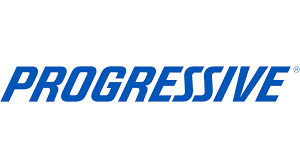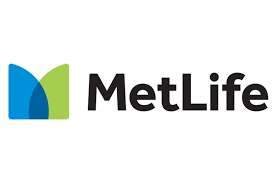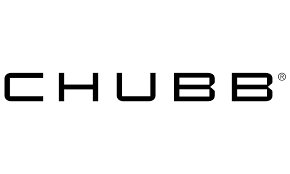Water damage is more of a problem than you might think. On average, Americans Household leaks can waste approximately nearly 900 billion gallons of water annually nationwide due to leaking pipes, kitchen or bathroom faucets, faulty toilets and so on. That’s equal to the annual household water use of nearly 11 million homes. An overflowing sink can do much more water damage than what you can see on the floor. Even with the best efforts to dry everything, mold grows in just 48 hours. This is the reason why you need professional drying services to get rid of undetected mold and keep your family safe from health problems associated with mold.
Contents
What to do if your sink overflows
A sink flooding is always a nerve-racking experience, as it involves further damage if not attended immediately. Here are some things you can do while you wait for the water damage restoration professionals.
- Turn off the water supply.
- Turn off electricity in the affected areas and rooms. If there is a lot of water on the floor, especially close to any outlets, you do not want to enter while the electricity is still running. If you are uncertain which circuit breakers control the power in your bathroom, shut off the entire electricity line.
- Get the pooling water using towels and mops. Remove as much water as you can as fast as possible before it gets absorbed in the floor and cabinet.
How To Fix Overflowing Sink?
When to call the water damage restoration company
A flooded sink or kitchen causes damage not only to all the appliances around, but to the structure of your house. Unless you properly dry the entire room, you risk getting mold in places that are not even visible sometimes, such as the subfloor.
Our professional water damage restoration team uses advanced equipment to detect and dry your property immediately. We bill the insurance company directly in order to take the load off your shoulders. You can contact us 24/7 from all 5 boroughs of New York, Long Island and Westchester.
While most water damages occur in the basement, the bathroom is usually the second most vulnerable area due the complex piping system. You are also likely to experience a leak in your kitchen, especially if you have a dishwasher or a washing machine connected to your sink. We have put together a guide on what causes a sink to overflow and also what are the immediate steps you need to take to avoid further damage.
Warning signs of a blocked sink
Kitchen Sink
The dishwasher connected to your kitchen sink discharges a large volume of water in a very short time. If there is any build up from accumulated grease or food inside the pipes, the discharged water will flood the kitchen sink overflow drain. When that happens, you will notice the kitchen sink filling up with water, although it is not clogged.
Other times, you notice your kitchen sink overflowing because it is in fact clogged. This could be due to food waste, hair or grease. To prevent this, always have the drain cover in your sink to prevent any large items going down the drain. The rest is common sense: do not dispose of food scraps, oil or grease through the sink.
Bathroom Sink
You will notice your bathroom sink filling up with water whenever the water cannot drain properly through the pipes. The most common sources are your toilet, washing machine or the bathtub. The overflow in your sink might be due to a blockage in the pipes or a faulty fixture drain in other parts of your home.
Upstairs Sink
An overflowing sink causes most damage in your bathroom. However, as water infiltrates in your walls and ceiling, it can cause even further damage to your home
Ceiling Damage
After a bathroom flood happening on the upper level, you might notice stains on your ceiling downstairs. The drywall can become extremely damaged and crack or, even worse, to fall down. There are several levels of fixing this problem, from simply painting over the stain to removing the drywall altogether and rebuilding the damaged part of your ceiling.
Subfloor Damage
Sometimes the flood is not that serious as to damage your ceiling, but your floor is surely exposed. The damage in your sub floor might not be visible, but it still poses a real threat. If water gets into your sub flooring, fixing it involves tearing your floor, which is always stressful and expensive. As water infiltrates, there is also the risk of mold growth.
Whether it is your ceiling or your sub flooring that is damaged you should reach out to a professional water damage restoration company to dry out your house using advanced equipment. This way you avoid long-term damage to your cabinets, walls and floors. You also keep your family safe from mold related health problems.
FAQs
Most overflowing sinks have clogs, which can occur due to toothpaste, hair and soap scum. As these substances build up over time, they can obstruct water flow, which then leads to an overflow.
Another significant cause of overflowing sinks is plumbing vent or sewer line issues, which compromise drainage efficiency.
You’ll need a small bottle brush or pipe cleaner and bleach solution (vinegar and baking soda with hot water are also OK). Gently insert the pipe cleaner into the overflow hole and scrub the inside to remove debris.
Once finished, pour the solution down the overflow and leave it for around ten minutes. Next, pour hot water down the overflow hole, which will clear away grime and debris.
Cleaning the sink regularly will prevent further blockages.
Mold can impact your health and cause allergic reactions, so if you plan to handle it yourself, wear a mask and gloves. Water and white vinegar should clear minor mold, but a bleach solution is fine for severe mold spores.
Repeat the steps for cleaning a sink overflow and leave your solution for ten minutes before washing it away. However, mold often requires more cleaning, so it’s best to repeat the steps and continue them until there’s no mold left.
Plungers can be helpful for overflows, but flexible cleaning brushes can get into smaller spaces more effectively. You can also use a plumber’s snake for stubborn blockages, but calling a professional plumber is a good idea.
Plumbers are trained to deal with severe leaks, and they can prevent damage to the sink.












